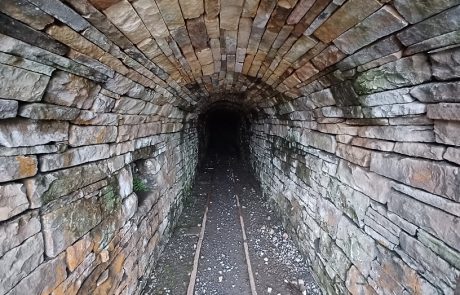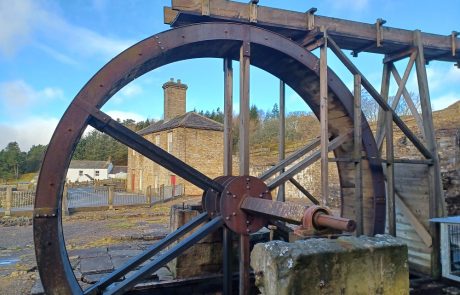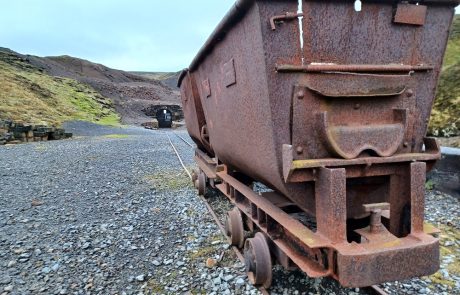News
Discover the land of lead and silver
Discover the land of lead and silver
20 March 2024
A new project to unearth the hidden stories of lead mining in the North Pennines National Landscape has been awarded funding from The National Lottery Heritage Fund and Historic England.
The North Pennines National Landscape team will be working with volunteers and local communities to take a new and exciting look at the industrial heritage that shaped the landscape and its people, and to find out what makes this place the ‘Land of Lead and Silver’.
Funding of just over £2,000,000 from The National Lottery Heritage Fund has been announced to support the delivery phase and a further £576,000 will follow from other funders. This includes £221,000 from Historic England. The project begins this month and will run until 2028.
Through the Land of Lead and Silver project, the North Pennines National Landscape team, partners, and volunteers will take a new approach to lead mining heritage, weaving in some of the unknown stories and features from this period in the North Pennines’ history. It will include extensive opportunities for people to get involved as volunteers and will have a vibrant community arts and engagement programme.
There will also be works to consolidate eight mining sites across the North Pennines National Landscape and UNESCO Global Geopark, to preserve them for generations to come. These sites and structures are regionally and nationally important and the team will work to make sure these are no longer at risk. Additional works will make other sites easier to access, and there will be improved information and interpretation about significant lead mining sites across the National Landscape.
Andie Harris, from the North Pennines National Landscape team, said: “During the next four years our historic environment work will focus on what makes the North Pennines the Land of Lead and Silver. This isn’t a project just for people interested in lead mining. It’s for everyone who has or would like to have a connection with this landscape and understand more about what made it the place it is today. We’re looking forward to working with volunteers, whether they have been part of the project so far or would like to join us for forthcoming activities.”
Helen Featherstone, Director, England, North at The National Lottery Heritage Fund said: “Industrial heritage in the North of England is hugely significant to the region. Thanks to money raised by National Lottery players, we are delighted to support the North Pennines National Landscape team with this project that will work with local people to further explore the history behind this unique landscape and the influence lead mining heritage has had on shaping our communities.”
Sarah Orme, one of the volunteers working on the project, said: “I am so pleased that the heritage of the North Pennines National Landscape has been recognised with this important funding. I am looking forward to learning even more about the area and its mining history and how it still influences the landscape today. I have really enjoyed the arts and crafts-related projects during the development stage, taking the opportunity to learn new skills and form new friendships.”
From the mid-1700s to the early 1900s, the North Pennines was dominated by lead mining. The landscape today has visible remnants from this once-thriving industry, from the levels driven miles underground to exploit the lead veins, to the mine complexes, dressing floors, and smelt mills which scattered the surface.
Lead mining shaped the villages and settlements of the North Pennines, but it also played a part in creating the rights of way that criss-crosses the valleys and winds up into the high moors. Today’s rights of way network that people use to explore the landscape is based largely on a system of footpaths and tracks that emerged to connect miners from isolated farms and hamlets with their places of work.
Where silver was present in the lead it could be separated by using the Pattinson process, a technique developed by Hugh Lee Pattinson, an influential figure in the North Pennines lead and silver industry, and a local of Alston Moor.
ENDS
Notes for editors
Images of Nenthead Mine ©North Pennines National Landscape.
For more information, please contact the communications team at the North Pennines National Landscape- by email or call 01388 528801.
About The National Lottery Heritage Fund
As the largest dedicated funder of the UK’s heritage, The National Lottery Heritage Fund’s vision is for heritage to be valued, cared for and sustained for everyone, now and in the future as set out in our strategic plan, Heritage 2033.
Over the next ten years, we aim to invest £3.6billion raised for good causes by National Lottery players to bring about benefits for people, places and the natural environment.
We help protect, transform and share the things from the past that people care about, from popular museums and historic places, our natural environment and fragile species, to the languages and cultural traditions that celebrate who we are.
We are passionate about heritage and committed to driving innovation and collaboration to make a positive difference to people’s lives today, while leaving a lasting legacy for future generations to enjoy.
Follow @HeritageFundUK on Twitter, Facebook and Instagram and use #NationalLotteryHeritageFund www.heritagefund.org.uk

The North Pennines National Landscape is one of England’s most special places – a peaceful, unspoilt landscape with a rich history and vibrant natural beauty. It was designated as an Area of Outstanding Natural Beauty (AONB) in 1988. The purpose of this nationally recognised designation is the conservation and enhancement of the natural beauty of the area.
At almost 2,000 sq. kilometres the North Pennines is the second largest of the 46 National Landscapes (in England, Wales and Northern Ireland) and is one of the most peaceful and unspoilt places in England. Visit www.landscapesforlife.org.uk for information about the National Landscapes family.
The North Pennines lies between the National Parks of the Lake District, the Yorkshire Dales, and Northumberland with the urban centres of County Durham away to the east. Parts of the National Landscape are within the boundaries of four local authorities; Cumberland Council, Durham County Council, Northumberland County Council, and Westmorland & Furness Council.
The North Pennines National Landscape Partnership is an alliance of public, statutory and voluntary sector bodies with an interest in the future of the North Pennines. The work of the Partnership is carried out by the National Landscape team which takes action to conserve and enhance the natural beauty of the area, to raise awareness of its special qualities and to improve the quality of life for local people.
UNESCO Global Geopark – As well as being a National Landscape, the North Pennines is a UNESCO Global Geopark. This puts the area’s Geopark status in the same UNESCO family as World Heritage Sites and Biosphere Reserves. UNESCO Global Geoparks are places with outstanding geology where special effort is made to make the most of geological heritage to support community and economy. Locally this includes producing geo-trails, developing projects with school and community groups, producing displays for visitor attractions, and holding geology festivals and events.










